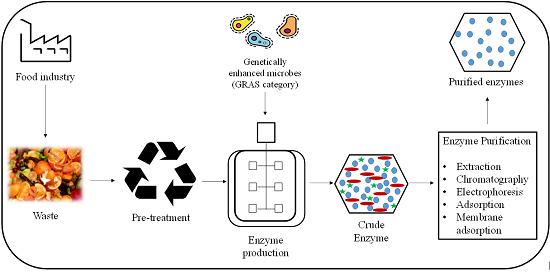

This cookie is set by GDPR Cookie Consent plugin. The cookie is used to store the user consent for the cookies in the category "Other. The cookies is used to store the user consent for the cookies in the category "Necessary". The cookie is set by GDPR cookie consent to record the user consent for the cookies in the category "Functional". The cookie is used to store the user consent for the cookies in the category "Analytics". These cookies ensure basic functionalities and security features of the website, anonymously. Necessary cookies are absolutely essential for the website to function properly. Principles of Inheritance and Variation.New Questions and Answers and Forum Categories The addition of new genetic engineering techniques has brightened the chances for yet greater yield. Thus, almost 50,000 times increase was possible by mutation and selection without involving genetic engineering techniques. However, the programmes of strain development accompanied by changes in medium and the growth conditions after hard work of many years, increased the yield of antibiotic penicillin to about 50,000 pg/ml. The production of penicillin on industrial scale was for the first time 1 to 10 pg/ml. One of the interesting examples of the progressive improvement is the antibiotic penicillin produced by the fungus Penicillium chrysogenum. The modification is done to achieve a target of higher yield. Microorganisms from original sources are highly modified in the laboratory. Maintenance and preservation of cultures is also very essential for getting cultures from the culture collections. UWO (University of Western Ontario Culture Collection, Department of Plant Sciences), Ontario N6A 587, Canada. UQM (Culture Collection, Department of Microbiology, University of Queensland), Herston, Brisbane 4006, Australia.
INDUSTRIAL BIOTECHNOLOGY PDF FULL
Some of the general culture collections with their abbreviation, full name and locations are given below: To get a new industrial process patented, the applicant is required to deposit a strain capable of carrying on the process, to a recognized culture collection.Īlthough most industrial companies would be reluctant to deposit their best cultures with any recognized culture collection, yet these collections serve as a ready source of cultures: A very big list of culture collections is given in the “World Directory of Collection of Microorganisms” (1982), updated by V.F. The strains so developed have been deposited in culture collections.

The initial and ultimate source of industrial strains has no doubt been nature but through the experience of years of large scale microbial processes perfection has been achieved for greater yield. Though the industrial strains may grow well under highly specialized artificial conditions of the fermenter they may show poor growth characteristics in natural conditions of competitive environments. The minor metabolic pathways are either brought down or eliminated. To achieve the desired objectives of high metabolic specialization the industrial strains are genetically modified by mutation or recombination using techniques of genetic engineering. Industrial microorganisms are selected for their metabolic activities which are capable of specific products and give high yield of particular metabolites. Industrial microorganisms are those microorganisms which have been selected carefully to make one or more specific products. Journal of Bioprocessing & Biotechniques, Journal of Bioterrorism & Biodefense, Fermentation Technology, Molecular Biology, Journal of Phylogenetics & Evolutionary Biology, Journal of Molecular and Genetic Medicine, Chemical Sciences Journal, Industrial Biotechnology and Journal of Industrial Microbiology and Biotechnology, White/industrial biotechnology Journals.(2) Microbial technology with genetically engineered microorganisms in which new genes have been inserted. Related Journals of White/industrial biotechnology Industrial biotechnology application has been proven to make significant contributions towards mitigating the impacts of climate change in these and other sectors. It uses renewable raw materials and is one of the most promising, newest approaches towards lowering greenhouse gas emissions. Industrial or white biotechnology uses enzymes and micro-organisms to make biobased products in sectors like chemicals, food and feed, detergents, paper and pulp, textiles and bioenergy (such as biofuels or biogas). White/industrial biotechnology Share this page


 0 kommentar(er)
0 kommentar(er)
